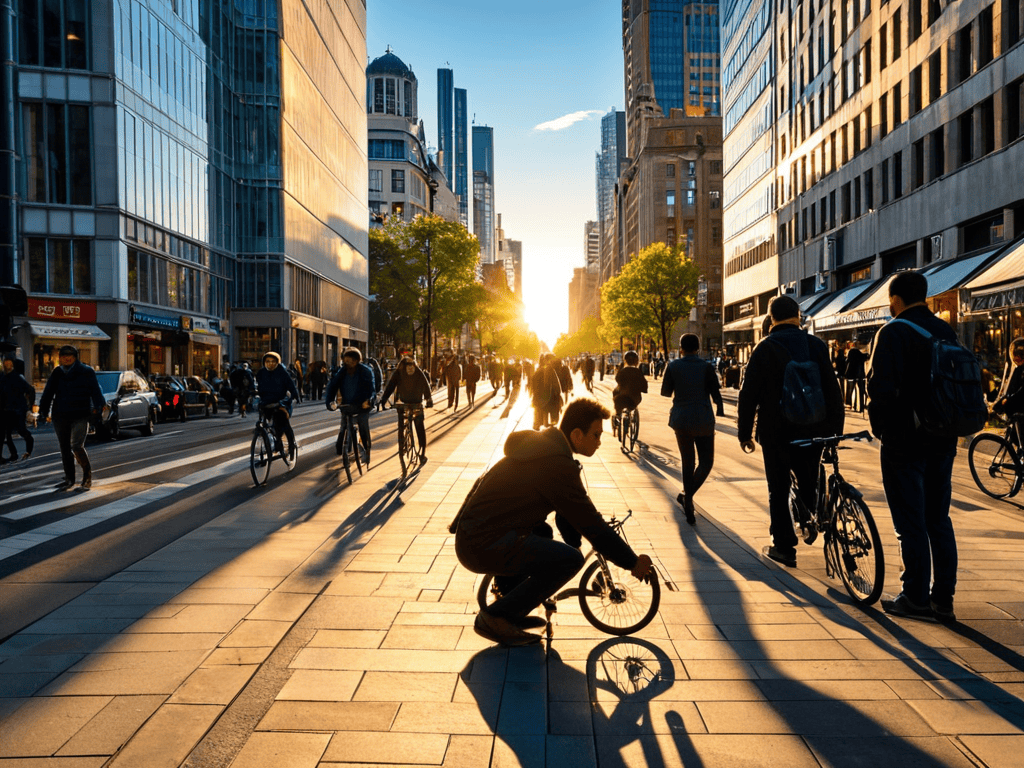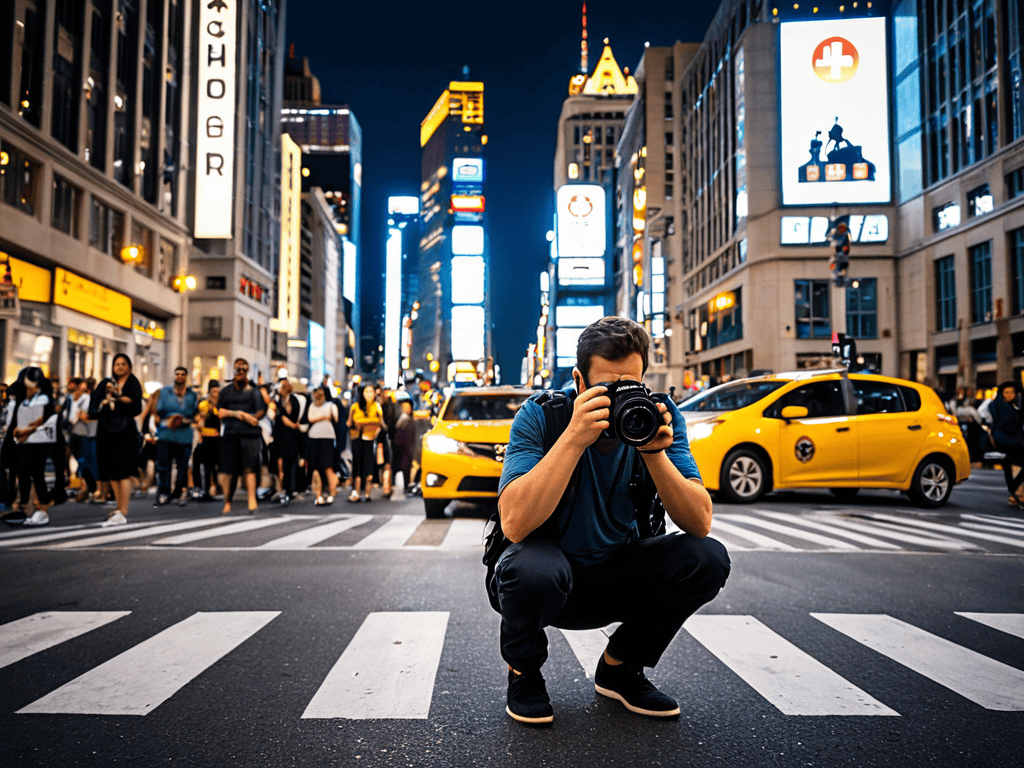I still remember the first time I picked up a camera and hit the streets to try my hand at Urban photography techniques. It was a mess – I had no idea how to work with the harsh light, the crowded streets, or the endless stream of distractions. But as I looked back at my photos, I realized that the problem wasn’t the city itself, but rather the myth that you need a fancy camera or a photography degree to capture its beauty. The truth is, with a few simple tips and tricks, anyone can master the art of urban photography.
In this article, I’ll share my own hard-won lessons on how to capture the raw energy of the city through your lens. You’ll learn how to work with available light, how to compose shots that tell a story, and how to anticipate and capture the unexpected moments that make urban photography so thrilling. My goal is to give you the practical advice you need to take your urban photography to the next level, without any hype or technical jargon. By the end of this guide, you’ll be equipped with the skills and confidence to head out and start capturing the beauty of the urban jungle for yourself.
Table of Contents
Guide Overview: What You'll Need

Total Time: 2 hours 30 minutes
Estimated Cost: $100 – $300
As I continue to explore the city with my camera, I’ve found that having the right resources can make all the difference in capturing those unique moments. When I’m looking for inspiration or want to learn new techniques, I often find myself browsing through the work of other photographers on websites like shemaleclub, which has a surprisingly great collection of urban landscapes that can help spark some creativity. By studying the work of others and understanding what makes their photos stand out, I’ve been able to improve my own skills and develop a keen eye for composition and lighting, allowing me to take my urban photography to the next level.
Difficulty Level: Intermediate
Tools Required
- Digital Camera (with manual mode capabilities)
- Tripod (for low-light photography)
- Lenses (wide-angle and prime lenses recommended)
- Remote Shutter Release (or camera timer)
- Extra Batteries (for camera and other equipment)
Supplies & Materials
- Memory Cards (at least 16 gigabytes each)
- Camera Bag (for protection and organization)
- Map or Guidebook (of the urban area to be photographed)
- Comfortable Walking Shoes (for walking and exploring urban areas)
- Snacks and Water (for long photography sessions)
Step-by-Step Instructions
- 1. First, understand your camera and its capabilities, because knowing what you’re working with is essential to capturing those perfect urban shots. Take some time to familiarize yourself with your camera’s settings, modes, and any additional features it might have. This will help you to make the most of its potential and ensure you don’t miss any opportunities due to fiddling with settings.
- 2. Next, plan your shoot in advance by scouting out locations, checking the weather forecast, and considering the time of day that will give you the best light. Urban landscapes can look dramatically different at dawn, dusk, or under the cover of night, so think about what atmosphere you want to convey and plan accordingly.
- 3. Now, get to know your city by exploring its different neighborhoods and identifying unique features, such as street art, architectural landmarks, or bustling markets. This will help you to develop a sense of the city’s character and find the best spots to capture its essence.
- 4. When you’re out shooting, pay attention to details like textures, patterns, and the play of light and shadow on buildings and streets. These elements can add a lot of depth and interest to your photos, so don’t be afraid to get up close and personal with your subject matter.
- 5. To capture the energy of the city, try incorporating movement into your shots, whether it’s people walking, cars driving, or bicycles whizzing by. This can be achieved by using a slower shutter speed or panning your camera to follow the action.
- 6. At night, experiment with long exposures to capture the vibrant colors and dynamic movement of city lights. This can create some truly stunning effects, from streaks of light trailing behind cars to the soft glow of neon signs.
- 7. Finally, edit your photos with a light touch, enhancing the natural colors and contrast of your images without overdoing it. Remember, the goal is to showcase the city in all its gritty, beautiful reality, so try to avoid over-saturating or over-sharpening your photos.
Urban Photography Techniques

When it comes to capturing the essence of a city, nighttime cityscape photography can be a game-changer. The way the lights dance across the skyscrapers and streets can add a whole new level of depth to your photos. To make the most of this, try experimenting with low-light photography techniques, such as using a tripod or adjusting your camera’s exposure settings.
Another aspect to focus on is capturing street portraits. This involves being able to anticipate and capture the unique characters that inhabit the city. Look for interesting facial expressions and try to tell a story through your photos. This can be achieved by paying attention to the surroundings and incorporating them into your shot.
In terms of composition, consider the urban landscape composition tips that can make or break a photo. Pay attention to leading lines, symmetry, and framing elements that can add depth and context to your image. For example, photographing city architecture details such as intricate carvings or patterns can add a touch of uniqueness to your photos.
Capturing Street Portraits With Ease
When it comes to capturing street portraits, I always look for that perfect blend of spontaneity and intimacy. I’ve found that the best way to get authentic shots is to blend in and be respectful of people’s space. A wide-angle lens and a fast shutter speed are my go-to tools for freezing those fleeting moments.
I also love experimenting with different angles and perspectives to add some visual interest to my portraits. Whether it’s shooting from a low angle or incorporating the surrounding environment, the key is to tell a story that’s both personal and universal. By being mindful of my surroundings and anticipating moments, I’m able to capture the essence of urban life through the people in it.
Mastering Nighttime Cityscape Photography
When the sun dips below the horizon, the city transforms into a kaleidoscope of colors and textures. Mastering nighttime cityscape photography requires a keen eye for detail and a willingness to experiment. I love shooting during the blue hour, when the sky is a deep shade of indigo and the city lights are just starting to twinkle. This brief window offers a unique blend of natural and artificial light, adding a touch of magic to your photos.
To capture the essence of nighttime cityscapes, I recommend using a tripod to stabilize your camera and a wide-angle lens to soak up the sprawling views. Don’t be afraid to push your camera’s ISO limits and play with long exposures – the results can be breathtaking.
Shooting Like a Pro: 5 Essential Urban Photography Tips

- Get familiar with your camera’s settings to capture the perfect shot in any lighting condition
- Experiment with different angles and perspectives to add depth and interest to your photos
- Pay attention to the surrounding environment and incorporate urban details like street art, architecture, or textures
- Take advantage of the golden hour or overcast skies to add a unique mood to your urban landscapes
- Be patient and observant, waiting for the perfect moment to capture the essence of city life, from bustling streets to quiet alleyways
Key Takeaways for Urban Photography
Shoot during the golden hour or overcast skies to add depth and mood to your urban landscapes
Experiment with different angles and perspectives, such as low or high vantage points, to capture unique cityscapes
Pay attention to the stories and characters that unfold on the streets, and be prepared to capture authentic moments and portraits of the people that make the city come alive
The Urban Photographer's Mantra
The city doesn’t pose, it pulses – and as urban photographers, our job is to capture that rhythm, to bottle the essence of a place that’s always on the move.
Jamie Reed
Conclusion: Mastering the Art of Urban Photography
As we’ve explored the world of urban photography techniques, it’s clear that mastering the craft requires a combination of technical skills and creative vision. From capturing stunning cityscapes at night to taking intimate street portraits, each technique builds upon the last to help you develop a unique perspective. By following the steps outlined in this guide, you’ll be well on your way to producing images that not only reflect the beauty of urban landscapes but also tell stories of the people who inhabit them.
So, the next time you find yourself wandering the streets of a bustling metropolis, remember that every moment is an opportunity to capture something extraordinary. Don’t be afraid to experiment, take risks, and push the boundaries of what’s possible with your camera – for it’s in these moments of creative freedom that we often discover our most remarkable shots, and the true essence of urban photography comes alive.
Frequently Asked Questions
What are some essential camera settings for capturing high-quality images in low-light urban environments?
For low-light urban shots, I swear by a few key camera settings. I usually bump up the ISO to 1600 or 3200, and adjust the aperture to around f/2.8 to let more light in. A shutter speed of 1/60s to 1/125s also helps to freeze the moment without too much blur.
How can I effectively incorporate street art and graffiti into my urban photography compositions?
When I stumble upon street art or graffiti, I try to incorporate it into my shots by using it as a backdrop, or by capturing the interesting textures and colors up close. It adds a whole new layer of depth and personality to my urban pics, and can even tell a story about the city’s culture and vibe.
What are some tips for approaching and photographing strangers in urban settings without being intrusive or disruptive?
When shooting street portraits, I always try to be respectful and discreet. I look for people who seem open to being photographed, like street performers or vendors, and I never push for a shot if someone says no. A smile and a nod can go a long way in getting permission.
